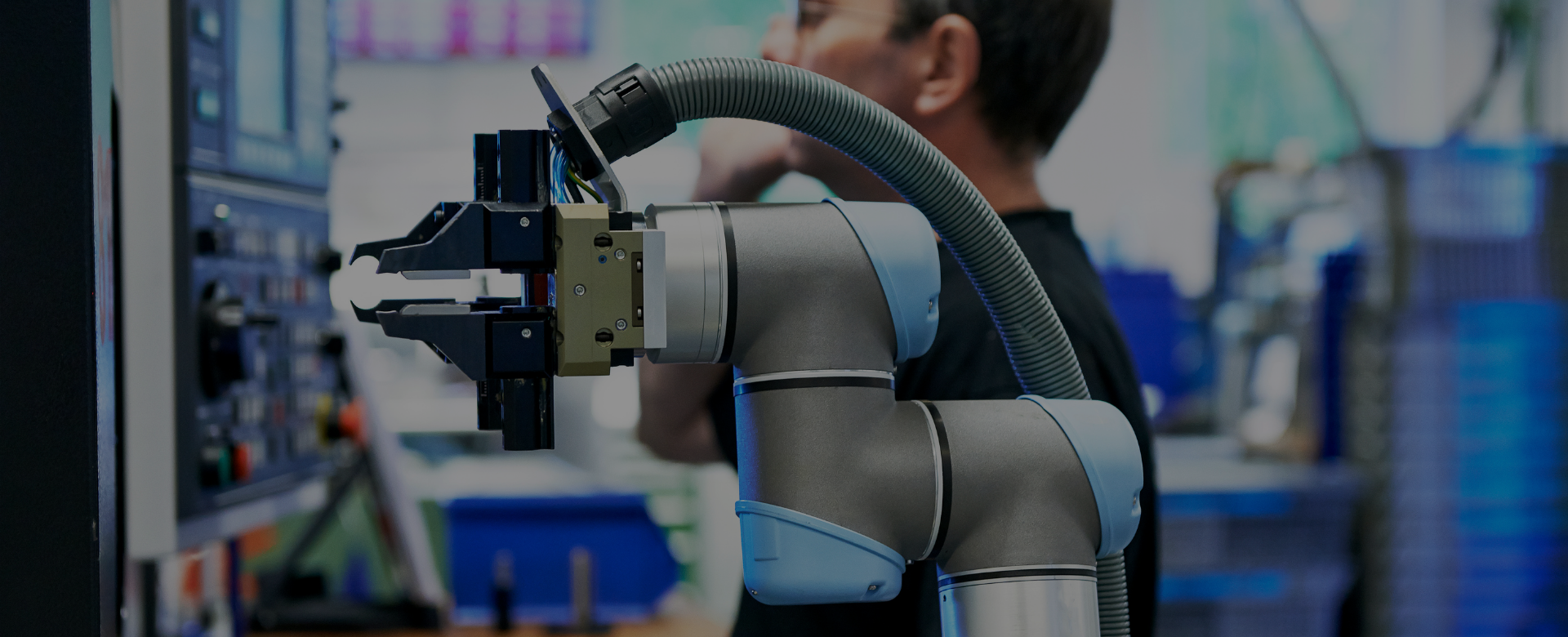From November 16-18, Las Vegas will be all about metalworking and fabricating. Well, maybe Las Vegas will still also be about gambling. But there is more than just slot machines in town: To discover innovative automation solutions in the metalworking industry, you will find no better place during this period than FABTECH 2016, November 16-18 at the Las Vegas Convention Center – this year Universal Robots will have an appearance with our own booth for the first time.
At FABTECH the UR robots will be exhibited in an application mounted with a scanner that provides metrology data on prototypes, comparing product deviations to technical drawings. The user-friendly robots will also be showcased in welding and material handling applications. So do stop by booth N-1804 for a close encounter!
Historically, the metalworking industry has been a place where new automation technologies have been implemented early. To keep up with the competition, big players have relied on finding innovative ways to steadily raise efficiency. The invention of assembly line production at the beginning of the 20th century or the implementation of industrial robots in the 1970’s streamlined production. Collaborative robotics mark another industrial revolution, from its inception it has played a vital role in the metalworking industry. But this time, there are two crucial differences.
Previous industrial revolutions developed top-down, as they primarily had their origin in large enterprises forging new ways of automation: They mostly resulted out of the invention of big and bulky machines, which regarded a lot of space in extensive production halls. And, even more importantly, these machines were expensive, which is why the technologies were affordable initially only for large enterprises. In contrast, the current industrial revolution coming with collaborative robots, comes bottom-up: By lowering costs and decreasing space requirements these robots make automation possible for small and medium-sized enterprises.
The metalworking industry is still seeking to raise efficiency and precision in both large and small enterprises. Recently, a third factor has become just as important: Flexibility. More and more often customers ask for highly individualized products, making the entire supply chain with all of its parts face a challenge of a complex high mix/low volume production. The metalworking industry is not an exception. This phenomenon results in the need for flexible automation technology to be set up for new tasks easily and quickly.
How might this look in practice? What is the opinion of people actually being responsible for such a production line? Let’s take a look:
Challenge:
Etalex is a Canadian shelving system manufacturer, needed a flexible robotic arm solution that could be used for multiple tasks while taking up little valuable space on the production floor.
One of the tasks is manually unloading a brake press 8 hours a day. Physically demanding work that also has the potential for accidents.
“We needed a flexible automation solution that could be used for 10 different production cycles. Since I only have 6 feet of space in front of the brake press, it was important that I could run this application without safety caging around it.” - Jean Francois Rousseau, Plant Engineer, Etalex
Solution:
Etalex chose a solution based on a UR10. It stands proudly at the start of the immense 300,000 square foot production hall. And, unlike any of the other 25 robots, the UR10 has no protective fencing taking up valuable space.
The UR10 takes pieces out of the brake press using a suction cup and places them in a stack nearby. This repetitive, potentially dangerous work is perfectly suited to the collaborative robot arm.
The manual tasks delegated to the employees have now been reduced to an hour daily spent on inspecting the quality of each pallet and changing the coils. Freeing up valuable time to work on more rewarding tasks.
Machine operator at Etalex, Richard Clive, stresses how the UR10 has made the workplace much safer:
“Before, you had to put your hands close to the brake press. There’s always a chance of an accident happening at any time. But with the Universal Robots, there is no chance of anyone getting injured.”












